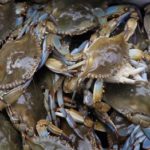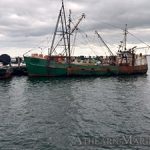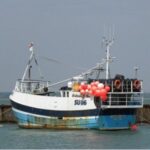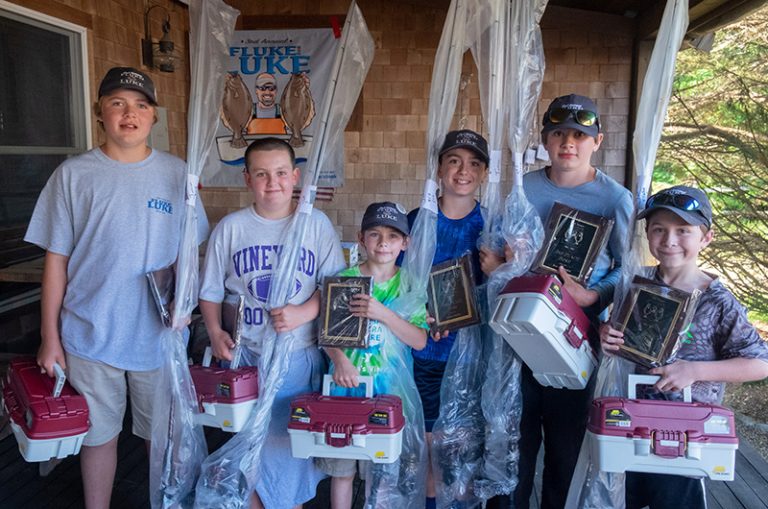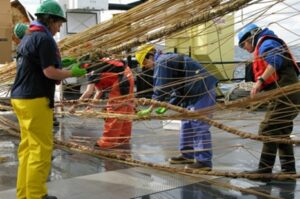Tag Archives: Fisheries and Oceans Canada
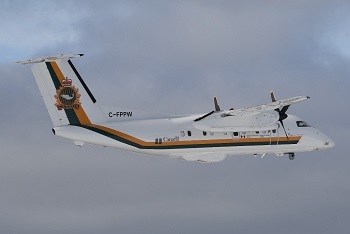
Canada launches new aircraft to improve conservation and ocean protection
Fishery officers require state of the art aerial surveillance equipment to continue the important work they conduct protecting Canada’s marine resources, ensuring compliance with fisheries management measures and enforcing the Fisheries Act from coast to coast to coast. In 2019, Fisheries and Oceans Canada announced a five-year, $128 million contract with PAL Aerospace-located in St. John’s, to deliver a new fleet of four aerial surveillance aircrafts, including two long-range maritime patrol aircrafts. When operational, the planes will fly out of three bases of operation: St. John’s, Newfoundland and Labrador; Halifax, Nova Scotia; and a brand new facility in Campbell River, British Columbia. >click to read< 15:22
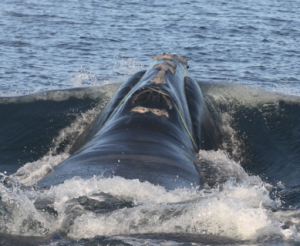
Canada outlines its 2021 measures to protect North Atlantic right whales
The Government of Canada remains committed to protecting the endangered North Atlantic right whale. To help prevent entanglements with fishing gear, Fisheries and Oceans Canada is building on last year’s successful measures by continuing to close fishing areas wherever and whenever North Atlantic right whales are present in the Gulf of St. Lawrence, Bay of Fundy, and Roseway Basin Critical Habitat,,, To help prevent collisions with vessels, Transport Canada will be re-implementing its 2020 season measures, including a restriction on vessel speed throughout much of the Gulf of St. Lawrence to protect areas where whales are detected,,, >click to read< 17:06
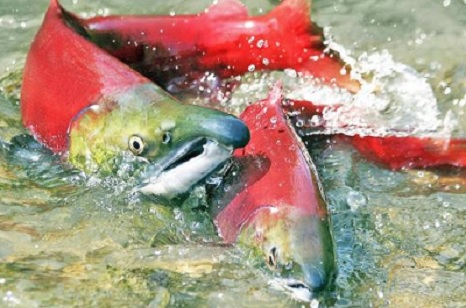
Canada’s sockeye salmon find their way home again after 50 years
For the first time in over 50 years, spawning sockeye salmon will return to Okanagan Lake in British Columbia,,, A fish ladder, left inoperable after the Penticton Dam was built in the 1950s, has been restored by the Okanagan Nation Alliance and Fisheries and Oceans Canada. A crane was used to remove a wooden gate blocking off the narrow concrete passage, opening the way for fish to get through. “To watch that gate go up, and to know that fish can finally return to their historic grounds, was a tearful moment,” she said. McFayden is a member of the Okanagan River Restoration Initiative (ORRI) and the Okanagan Similkameen Conservation Alliance. >click to read< 07:55
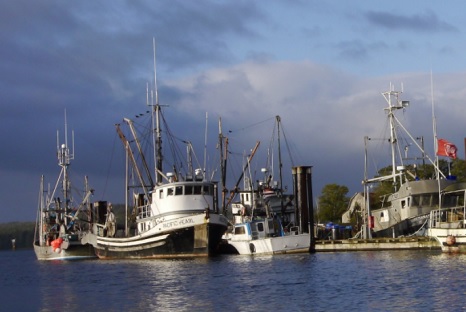
Advocates say B.C. needs a fisheries minister
Each year, about 196,000 tonnes of seafood, everything from salmon to scallops, is harvested off the B.C. coast. But unlike its East Coast counterparts, the province doesn’t have a fisheries minister. In the past several decades, the province has seen tumbling salmon populations, an increasingly inequitable distribution of the fisheries’ economic benefits and a drop in local processing capacity. All have eaten away at coastal communities, and the province’s ability to feed itself from the sea, a situation that advocates say calls for a minister dedicated to the portfolio. >click to read< 18:38
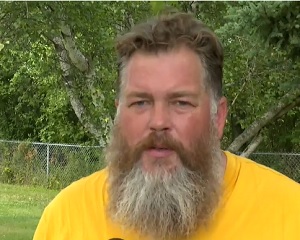
Nova Scotia: Residents raise alarm over causeway’s threat to local fish stocks
“This river is already dying, we’re already losing all of our fish, and along with losing all of our fish, we’re losing our rights as well,” said Nikki Lloyd, of the Annapolis Valley First Nation. Darren Porter, a local fisherman and fishery spokesperson for the Fundy United Federation, said over many years, he’s seen a reduction in productivity for both professional and recreational fishers. Government efforts, he alleged, to improve passage times have fallen short of what’s required to keep the ecosystem healthy. >click to read< 13:08
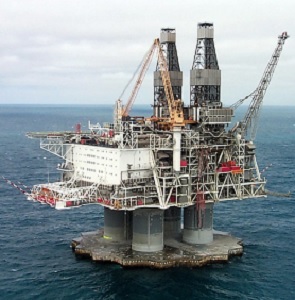
Drilling fluid spill from Hibernia platform shuts down production
Newfoundland and Labrador’s offshore regulatory board is reporting a spill of drilling and production fluid from the Hibernia platform during well operations on Sunday, leading to an immediate shutdown of production. The Canada-Newfoundland and Labrador Offshore Petroleum Board said the spill was reported Monday by the Hibernia Management and Development Company after water sampling indicated an “exceedance of produced water discharge.” Produced water is a mixture of seawater from the reservoir, used in injection, with drilling and production fluids for normal production operations, according to a press release from the C-NLOPB. >click to read< 16:49
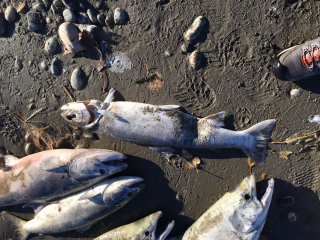
Critics say federal government is wiping out commercial pink salmon fisheries
In emails obtained by the BC Wildlife Federation, British Columbia government staff and scientists say Fisheries and Oceans Canada is burying science and misrepresenting a crisis situation to the public, risking extinction of Thompson-Chilcotin steelhead trout. In the fall of 2017, only an estimated 150 Thompson fish returned alongside just 77 to the Chilcotin down from thousands just a decade and a half ago. The email chain shows the DFO changed the wording of a public scientific document that is based on peer reviewed science. >click to read< 18:40
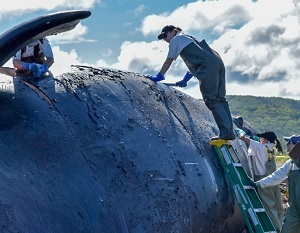
Fisheries and Oceans Canada Blunder – Expert says feds should have acted more quickly on right whale migration
Fisheries and Oceans Canada says it has sighted another dead endangered right whale drifting off the Gaspé Peninsula, bringing the total number of deaths in Canadian waters this year to six. The government was still assessing recovery and necropsy options for this sixth whale. The new information late Thursday came as an expert said Canadian officials did not respond quickly enough to this year’s migration of North Atlantic right whales. >click to read< 08:55
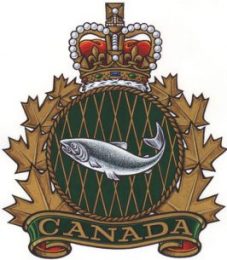
Feds review this year’s right-whale protections
It was enough. But was it too much? That’s the question Fisheries and Oceans Canada wants to answer after a season of unprecedented measures to protect North Atlantic right whales — including mandatory ship slowdowns and fisheries closures. To date, none of the critically endangered whales has died in Canadian waters in 2018, unlike in 2017, when 12 died in the Gulf of St. Lawrence, largely due to ship strikes and entanglements in fishing gear.,,, On the East coast, the department (DFO) is now holding regional meetings with members of the fishing industry to gather feedback on those management measures. >click to read<15:03
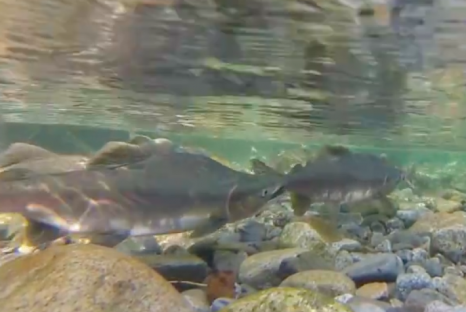
British Columbia: What is behind the sockeye salmon collapse?
The sockeye salmon run this year, is, according to Fisheries and Oceans Canada and other reputable sources, down considerably. The reason for this, depends on who you talk to. Aaron Hill, executive director of Watershed Watch Salmon Society, says part of the problem is the fisheries ministry has dragged its feet on the Cohen Commission recommendations. The Cohen Commission, created in 2009, issued a report in 2012 with 75 recommendations on how Fisheries and Oceans Canada (working with its provincial partner) could monitor and safeguard the Pacific salmon fisheries. click here to read the story 11:43
Canada: Atlantic bluefin tuna not listed as an endangered species
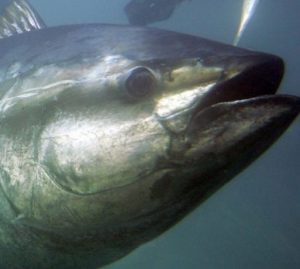 Atlantic bluefin tuna will not be listed on the endangered species list, a decision released Wednesday. The federal government’s final decision was published in the Canada Gazette saying it would not be listed under the Species at Risk Act (SARA). Fisheries and Oceans Canada rejected advice to list the species as endangered last summer, saying western Atlantic bluefin tuna stocks have been rebuilding since 2011, when the Committee on the Status of Endangered Wildlife in Canada (COSEWIC) said tuna should be listed as an endangered species under federal species-at-risk legislation. Included in the decision was the government’s rationale and the steps that will be taken to help in its recovery. If the species would have been listed on SARS, it would no longer have been allowed to be fished commercially. The in Halfax is calling on the government to take steps to work and conserve the species. (of course!) click here to read the story 08:21
Atlantic bluefin tuna will not be listed on the endangered species list, a decision released Wednesday. The federal government’s final decision was published in the Canada Gazette saying it would not be listed under the Species at Risk Act (SARA). Fisheries and Oceans Canada rejected advice to list the species as endangered last summer, saying western Atlantic bluefin tuna stocks have been rebuilding since 2011, when the Committee on the Status of Endangered Wildlife in Canada (COSEWIC) said tuna should be listed as an endangered species under federal species-at-risk legislation. Included in the decision was the government’s rationale and the steps that will be taken to help in its recovery. If the species would have been listed on SARS, it would no longer have been allowed to be fished commercially. The in Halfax is calling on the government to take steps to work and conserve the species. (of course!) click here to read the story 08:21
Report: Newfoundland cod stocks on rebound, but still at critically low levels
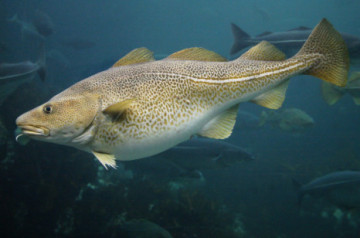 A new federal report says northern cod stocks off eastern Newfoundland continue to grow 25 years after a sweeping moratorium, but warns they remain in the “critical zone.” The Fisheries and Oceans Canada update concludes fishing should be kept to the lowest possible levels as a precaution. It finds that while total biomass was up seven per cent from 2015 to 2016, stocks are still at critically low levels. The report says there was a spawning biomass of about 300,000 tonnes in 2015. Fisheries biologist Karen Dwyer says a spawning biomass of about 900,000 tonnes would support a more extensive commercial fishery. Link 10:55
A new federal report says northern cod stocks off eastern Newfoundland continue to grow 25 years after a sweeping moratorium, but warns they remain in the “critical zone.” The Fisheries and Oceans Canada update concludes fishing should be kept to the lowest possible levels as a precaution. It finds that while total biomass was up seven per cent from 2015 to 2016, stocks are still at critically low levels. The report says there was a spawning biomass of about 300,000 tonnes in 2015. Fisheries biologist Karen Dwyer says a spawning biomass of about 900,000 tonnes would support a more extensive commercial fishery. Link 10:55
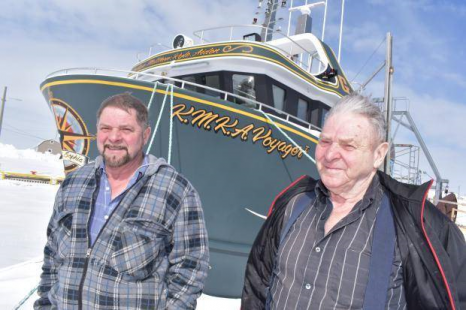
The cod are coming back to Newfoundland — and they’re eating the shrimp that had taken over
Theodore Genge has a big beautiful new dragger that’ll be ready to head for “the Labrador” as soon as the sea ice loosens its grip on Anchor Point. When the 63-year-old Newfoundland fisherman began building the $2.2 million trawler two years ago he had 750,000 pounds worth of shrimp quota to catch. But plummeting shrimp numbers in the cold water off Labrador have led Fisheries and Oceans Canada to drastically carve into quotas for that coast. Genge expects that by April he’ll be left with a total of 300,000 lbs of quotas — 220,000 lbs in the Gulf of St. Lawrence, where there is still plenty of shrimp, and 80,000 lbs on the Labrador coast. “Right now, yes, it’s pretty stressful – I don’t know whether there’s any hope or no,” said Genge. (Big read!) continue reading the article here 16:25
Herring stock falling to critical level say scientists at Fisheries and Oceans Canada
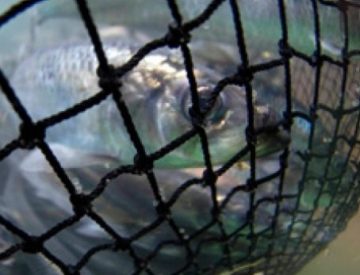 Even if there was a two-year hiatus in the spring herring fishery in the Gulf of St Lawrence, there would still be a 90 per cent chance the fish stocks would remain at critical levels, say scientists at Fisheries and Oceans Canada. Herring stocks have been dwindling for two decades. Despite the advice of its own scientists, Fisheries and Oceans Canada still allowed 2,000 tonnes of spring herring to be caught in 2016, and will allow the same this year. Federal herring biologist Jenni McDermid said there is a risk of pushing these fish beyond the recovery point. Read the story here 11:33
Even if there was a two-year hiatus in the spring herring fishery in the Gulf of St Lawrence, there would still be a 90 per cent chance the fish stocks would remain at critical levels, say scientists at Fisheries and Oceans Canada. Herring stocks have been dwindling for two decades. Despite the advice of its own scientists, Fisheries and Oceans Canada still allowed 2,000 tonnes of spring herring to be caught in 2016, and will allow the same this year. Federal herring biologist Jenni McDermid said there is a risk of pushing these fish beyond the recovery point. Read the story here 11:33
DFO justifies Area 6 northern shrimp catch by offshore fleet
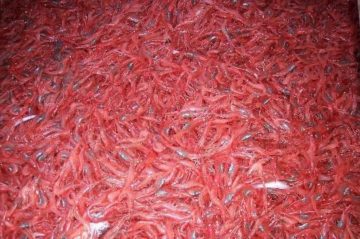 Fisheries and Oceans Canada is defending its decision to allow offshore factory freezer trawlers to catch northern shrimp this spring, even though its own scientists say the stock is vulnerable to collapse. Inshore fishermen have criticized the fishing, because 2016 quotas have not yet been set, and could be cut significantly. Glenn Best, who fishes shrimp off Fogo Island, said the so-called “bridging policy” should not have been applied in Area 6 at a time when stocks are under review. “The [cod] moratorium would be a walk in the park compared to what’s going to happen if we lose this shrimp,” he said. “This is the bread and butter. This is what sustains communities from Fogo Island to St. Anthony to southern Labrador. We need this shrimp. Why are we taking chances with it?” Read the rest here 10:10
Fisheries and Oceans Canada is defending its decision to allow offshore factory freezer trawlers to catch northern shrimp this spring, even though its own scientists say the stock is vulnerable to collapse. Inshore fishermen have criticized the fishing, because 2016 quotas have not yet been set, and could be cut significantly. Glenn Best, who fishes shrimp off Fogo Island, said the so-called “bridging policy” should not have been applied in Area 6 at a time when stocks are under review. “The [cod] moratorium would be a walk in the park compared to what’s going to happen if we lose this shrimp,” he said. “This is the bread and butter. This is what sustains communities from Fogo Island to St. Anthony to southern Labrador. We need this shrimp. Why are we taking chances with it?” Read the rest here 10:10
Redistribution of Quota has P.E.I. halibut fishermen disappointed with lowered catch
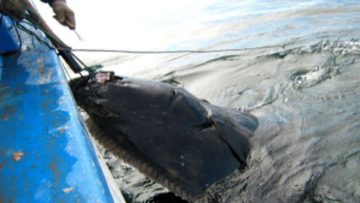 P.E.I. fishermen will have less halibut to catch this year after a last-minute decision by Fisheries and Oceans Canada to redistribute the quota. The decision means the Island’s share of the allowed catch will drop down to 40 tonnnes from 46 tonnes — a 13-per-cent decrease — in a fishery that opens Sunday. “We’re still in a state of shock,” said the chair of the P.E.I. Fishermen’s Association’s groundfish advisory board, Tony Carter. “We’re back to ground zero, basically.” All three Maritime provinces saw their quotas drop in the DFO decision Monday, while fishermen in Newfoundland and Labrador and Quebec got an increase. This reverses a decision made last year by former federal fisheries minister and Island MP Gail Shea. Read the rest here 09:35
P.E.I. fishermen will have less halibut to catch this year after a last-minute decision by Fisheries and Oceans Canada to redistribute the quota. The decision means the Island’s share of the allowed catch will drop down to 40 tonnnes from 46 tonnes — a 13-per-cent decrease — in a fishery that opens Sunday. “We’re still in a state of shock,” said the chair of the P.E.I. Fishermen’s Association’s groundfish advisory board, Tony Carter. “We’re back to ground zero, basically.” All three Maritime provinces saw their quotas drop in the DFO decision Monday, while fishermen in Newfoundland and Labrador and Quebec got an increase. This reverses a decision made last year by former federal fisheries minister and Island MP Gail Shea. Read the rest here 09:35
As Canada probes Haida Gwaii ocean fertilizing, new project proposed in Chile
 The federal government is still investigating an experiment off the West Coast almost four years ago aimed at boosting salmon stocks that sparked an international outcry. Now a former director and operations officer of Haida Salmon Restoration Corp. says he wants to carry out another ocean-fertilizing exercise, this time off South America. Jason McNamee says the company Oceaneos, where he serves as chief operations officer, has been in talks about fertilizing the ocean with iron with the Chilean government, which could not be reached for comment. In July 2012, the now-inactive Haida Salmon Restoration travelled to international waters near the islands of Haida Gwaii where it dumped 100 tonnes of iron sulphate into the water in an effort to restore waning salmon stocks. Read the rest here 08:26
The federal government is still investigating an experiment off the West Coast almost four years ago aimed at boosting salmon stocks that sparked an international outcry. Now a former director and operations officer of Haida Salmon Restoration Corp. says he wants to carry out another ocean-fertilizing exercise, this time off South America. Jason McNamee says the company Oceaneos, where he serves as chief operations officer, has been in talks about fertilizing the ocean with iron with the Chilean government, which could not be reached for comment. In July 2012, the now-inactive Haida Salmon Restoration travelled to international waters near the islands of Haida Gwaii where it dumped 100 tonnes of iron sulphate into the water in an effort to restore waning salmon stocks. Read the rest here 08:26
B.C. First Nation vows to stop herring roe fishery in its territory
 The Tla’amin First Nation has served notice that it will take action to halt any commercial herring roe fishery in its traditional territory. A band council resolution sent to the Department of Fisheries and Oceans (DFO) says a commercial fishery would cause “irreversible damage” to a herring stock that is just showing signs of recovery after a catastrophic collapse in the 1980s. “If the decision of Fisheries and Oceans Canada is to proceed with the commercial herring fishery, Tla’amin Nation will take steps to restrain the mismanagement of the fishery,” the resolution reads. A DFO manager alerted the band’s fisheries manager Kevin Timothy to the possibility of a commercial opening in waters near Powell River. Read the rest here 08:24
The Tla’amin First Nation has served notice that it will take action to halt any commercial herring roe fishery in its traditional territory. A band council resolution sent to the Department of Fisheries and Oceans (DFO) says a commercial fishery would cause “irreversible damage” to a herring stock that is just showing signs of recovery after a catastrophic collapse in the 1980s. “If the decision of Fisheries and Oceans Canada is to proceed with the commercial herring fishery, Tla’amin Nation will take steps to restrain the mismanagement of the fishery,” the resolution reads. A DFO manager alerted the band’s fisheries manager Kevin Timothy to the possibility of a commercial opening in waters near Powell River. Read the rest here 08:24
FFAW-Unifor NEWS RELEASE: Thousands of Jobs at Risk in Northern Shrimp Fishery
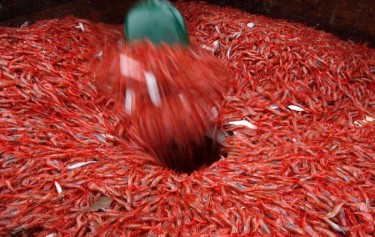 Thursday, February 25, 2016 St. John’s – Thousands of harvesting and processing jobs in rural Newfoundland and Labrador may be lost if the current fisheries management policies for northern shrimp are maintained. The Fish Food and Allied Workers Union (FFAW-Unifor) is providing further details on the impact of sharp declines in the northern shrimp stock as outlined in Fisheries and Oceans Canada’s (DFO) stock status report. “The implications of the stock status report, if they are confirmed, will be challenging if DFO’s quota allocation policies do not change,” said Keith Sullivan, President of the FFAW. Read the press release here 11:56
Thursday, February 25, 2016 St. John’s – Thousands of harvesting and processing jobs in rural Newfoundland and Labrador may be lost if the current fisheries management policies for northern shrimp are maintained. The Fish Food and Allied Workers Union (FFAW-Unifor) is providing further details on the impact of sharp declines in the northern shrimp stock as outlined in Fisheries and Oceans Canada’s (DFO) stock status report. “The implications of the stock status report, if they are confirmed, will be challenging if DFO’s quota allocation policies do not change,” said Keith Sullivan, President of the FFAW. Read the press release here 11:56
Kits Coast Guard Station will be reopened says Fisheries Minister
 It’s official, the Kits Coast Guard Station will be reopened. Minister of Fisheries, Oceans and the Canadian Coast Guard, Hunter Tootoo, made the announcement at a press conference outside the base. A timeline has not been given, but the base will be opened “as soon as possible.” “The Prime Minister made the commitment to re-open the Kitsilano Canadian Coast Guard Base and we are delivering on that commitment,” said Tootoo. “I have directed my officials to begin restoration work as soon as possible,,, Read the article here 15:21
It’s official, the Kits Coast Guard Station will be reopened. Minister of Fisheries, Oceans and the Canadian Coast Guard, Hunter Tootoo, made the announcement at a press conference outside the base. A timeline has not been given, but the base will be opened “as soon as possible.” “The Prime Minister made the commitment to re-open the Kitsilano Canadian Coast Guard Base and we are delivering on that commitment,” said Tootoo. “I have directed my officials to begin restoration work as soon as possible,,, Read the article here 15:21
Canada’s new Liberal government says it is currently developing priorities for the lobster industry
 Canada’s new Liberal government is in no rush to implement Stephen Harper’s promise aimed at wooing voters in Atlantic Canada during the recent federal election of $20 million in funding for lobster promotion and research. Harper made the pledge Sept. 10 in New Annan, P.E.I. and promised $5 million for research and $15 million over three years to the Halifax-based Lobster Council of Canada to promote lobster sales. Fisheries and Oceans Canada would not address Harper’s promise, saying new Fisheries Minister Hunter Tootoo is developing priorities. Read the rest here 08:44
Canada’s new Liberal government is in no rush to implement Stephen Harper’s promise aimed at wooing voters in Atlantic Canada during the recent federal election of $20 million in funding for lobster promotion and research. Harper made the pledge Sept. 10 in New Annan, P.E.I. and promised $5 million for research and $15 million over three years to the Halifax-based Lobster Council of Canada to promote lobster sales. Fisheries and Oceans Canada would not address Harper’s promise, saying new Fisheries Minister Hunter Tootoo is developing priorities. Read the rest here 08:44
Liberals to reopen Maritime Rescue Sub-centre in St. John’s
 New federal Fisheries Minister Hunter Tootoo and the Liberal government will reopen the Maritime Rescue Sub-centre in St. John’s. The Nunavut MP signed the mandate given to him by new Prime Minister Justin Trudeau in a letter nine days after he was sworn in as the minister of Fisheries and Oceans Canada. The sub-centre was closed in 2012 despite loud outcry from advocates and fishermen. Provincial and municipal politicians — such as St. John’s Mayor Dennis O’Keefe —have lobbied since to have it reopened. Read the rest here 08:32
New federal Fisheries Minister Hunter Tootoo and the Liberal government will reopen the Maritime Rescue Sub-centre in St. John’s. The Nunavut MP signed the mandate given to him by new Prime Minister Justin Trudeau in a letter nine days after he was sworn in as the minister of Fisheries and Oceans Canada. The sub-centre was closed in 2012 despite loud outcry from advocates and fishermen. Provincial and municipal politicians — such as St. John’s Mayor Dennis O’Keefe —have lobbied since to have it reopened. Read the rest here 08:32
U.S. crab-fishing troubles could boost B.C.
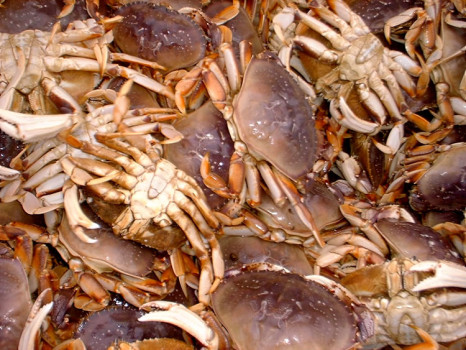 B.C.’s crab fishermen are waiting to see if demand picks up for their catch as the presence of an algae-borne toxin postpones much of California’s crab fishing. Storms have dissipated an algae bloom off B.C.’s coast. Even at its height in the summer, the massive bloom did not have the high concentrations of algae associated with demoic acid that showed up off the U.S., said Ian Perry, a research scientist with Fisheries and Oceans Canada in Nanaimo, on Friday. That has allowed B.C.’s fishery for sweet Dungeness crab to remain open. Read the rest here 15:29
B.C.’s crab fishermen are waiting to see if demand picks up for their catch as the presence of an algae-borne toxin postpones much of California’s crab fishing. Storms have dissipated an algae bloom off B.C.’s coast. Even at its height in the summer, the massive bloom did not have the high concentrations of algae associated with demoic acid that showed up off the U.S., said Ian Perry, a research scientist with Fisheries and Oceans Canada in Nanaimo, on Friday. That has allowed B.C.’s fishery for sweet Dungeness crab to remain open. Read the rest here 15:29
Right whales have Cape Breton Whelk fishermen on hold.
 One Cape Breton fisherman says concern over changing migration patterns of endangered right whales are already having an impact on his ability to earn a living. Derrick Wadden, a multi-species fisherman, said he invested more than $7,000 this year in ropes and custom-made traps for whelk, a large, undersea snail, in hopes of going fishing this month. Fisheries and Oceans Canada had indicated fishing conditions for whelk licences would be issued at the beginning of September, he said, but the conditions have been delayed due to concern about the potential for right whales to get tangled in gear. Read the rest here 14:56
One Cape Breton fisherman says concern over changing migration patterns of endangered right whales are already having an impact on his ability to earn a living. Derrick Wadden, a multi-species fisherman, said he invested more than $7,000 this year in ropes and custom-made traps for whelk, a large, undersea snail, in hopes of going fishing this month. Fisheries and Oceans Canada had indicated fishing conditions for whelk licences would be issued at the beginning of September, he said, but the conditions have been delayed due to concern about the potential for right whales to get tangled in gear. Read the rest here 14:56
Nine Mile Creek fishermen say harbour needs deeper dredging
 Fishermen in a small harbour on the south shore of P.E.I. say they’re worried about their boats getting damaged and possibly even running aground. Giles Clinton has been fishing at Nine Mile Creek for more than 13 years. He says there is a big problem with congestion in the area. Clinton says tried to fix the problem by dredging a section of the harbour and installing a floating dock where boats could tie up. He and other fishermen in the area said the digging wasn’t deep enough and the dock now sits on shore waiting to be reinstalled. Read the rest here 08:25
Fishermen in a small harbour on the south shore of P.E.I. say they’re worried about their boats getting damaged and possibly even running aground. Giles Clinton has been fishing at Nine Mile Creek for more than 13 years. He says there is a big problem with congestion in the area. Clinton says tried to fix the problem by dredging a section of the harbour and installing a floating dock where boats could tie up. He and other fishermen in the area said the digging wasn’t deep enough and the dock now sits on shore waiting to be reinstalled. Read the rest here 08:25
P.E.I. tuna fisherman getting 30 ton Atlantic bluefin quota increase
 According to a news release from Fisheries and Oceans Canada, there are more than 300 tuna fishermen across P.E.I. Jeff MacNeill is one of them. He says the increase in quota could bring in a lot of extra income, especially given that last year, fishermen were receiving about $6,000 to $7,000 for an average-sized tuna. “If I’m allowed one extra bluefin tuna, that’s quite a sizeable increase in my income” Read the rest here 07:53
According to a news release from Fisheries and Oceans Canada, there are more than 300 tuna fishermen across P.E.I. Jeff MacNeill is one of them. He says the increase in quota could bring in a lot of extra income, especially given that last year, fishermen were receiving about $6,000 to $7,000 for an average-sized tuna. “If I’m allowed one extra bluefin tuna, that’s quite a sizeable increase in my income” Read the rest here 07:53
The P.E.I Fishermen’s Association ask’s DFO for response on lobster season extension by Wednesday
 The P.E.I. Fishermen’s Association has sent a letter to Fisheries and Oceans Canada asking for a decision on an extension to the spring lobster season no later than next Wednesday, June 24. The season normally closes June 30. The executive director of the P.E.I. Fishermen’s Association Ian MacPherson said fishermen need to know what will happen. “For a variety of reasons, certainly so people can plan what they need to do to either leave their traps in the water or take them out,” Read the rest here 12:39
The P.E.I. Fishermen’s Association has sent a letter to Fisheries and Oceans Canada asking for a decision on an extension to the spring lobster season no later than next Wednesday, June 24. The season normally closes June 30. The executive director of the P.E.I. Fishermen’s Association Ian MacPherson said fishermen need to know what will happen. “For a variety of reasons, certainly so people can plan what they need to do to either leave their traps in the water or take them out,” Read the rest here 12:39
Federal crackdown on illegal halibut fishing in Nova Scotia sees 11 fishermen pleading guilty to misreporting
 The probe started more than five years ago, after Fisheries and Oceans Canada officials started hearing reports about misreported catches in the growing and lucrative halibut fishery. “Fisheries officers were hearing rumours,” said MacLean. “When we started to look at the information that we had, internally, we were starting to see indicators that maybe all wasn’t right in that particular fishery.” MacLean said investigators relied on, to show discrepancies. Read the rest here 09:40
The probe started more than five years ago, after Fisheries and Oceans Canada officials started hearing reports about misreported catches in the growing and lucrative halibut fishery. “Fisheries officers were hearing rumours,” said MacLean. “When we started to look at the information that we had, internally, we were starting to see indicators that maybe all wasn’t right in that particular fishery.” MacLean said investigators relied on, to show discrepancies. Read the rest here 09:40
Bob Fraumeni beats the odds fishing the Pacific
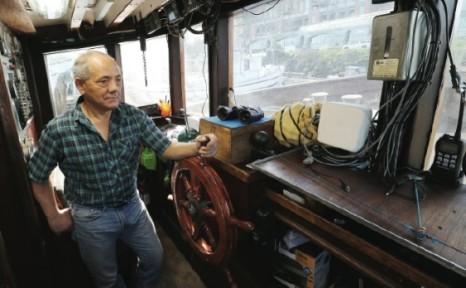 Bob Fraumeni gazes out the window at the vibrant float homes and fishing vessels docked at Fisherman’s Wharf and beyond to the wind-tossed waves of the Inner Harbour. “I’ve been scrumbling around down there since I was about 10,” says Fraumeni, owner of Finest At Sea, a leading provider of wild seafood on the West Coast. “For some reason, I’ve had this incredible desire to find out what was in the water. I remember at the age of four, all I wanted to do was go fishing.” Read the rest here 14:05
Bob Fraumeni gazes out the window at the vibrant float homes and fishing vessels docked at Fisherman’s Wharf and beyond to the wind-tossed waves of the Inner Harbour. “I’ve been scrumbling around down there since I was about 10,” says Fraumeni, owner of Finest At Sea, a leading provider of wild seafood on the West Coast. “For some reason, I’ve had this incredible desire to find out what was in the water. I remember at the age of four, all I wanted to do was go fishing.” Read the rest here 14:05






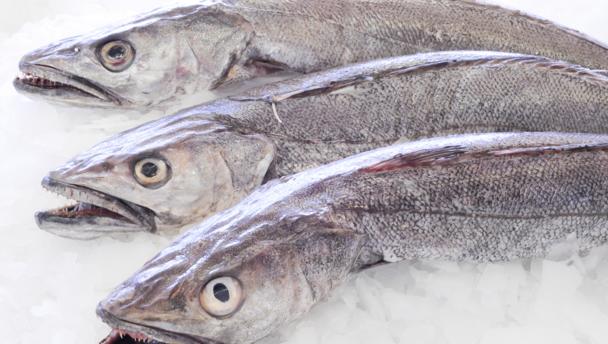 The economic squeeze of a Russian trade embargo has prompted Canada to sidestep its own laws by allowing B.C.’s biggest fishery to sell thousands of tonnes of high-quality fish as slurry to feed farmed salmon and chickens. Russia is the dominant market for B.C.’s most abundant food fish, locally known as .,, But a 2014 Russian embargo banning the purchase of many Canadian exports including seafood, means that a fishery worth $40 million annually in landed value each year has lost its primary market.
The economic squeeze of a Russian trade embargo has prompted Canada to sidestep its own laws by allowing B.C.’s biggest fishery to sell thousands of tonnes of high-quality fish as slurry to feed farmed salmon and chickens. Russia is the dominant market for B.C.’s most abundant food fish, locally known as .,, But a 2014 Russian embargo banning the purchase of many Canadian exports including seafood, means that a fishery worth $40 million annually in landed value each year has lost its primary market. 



























